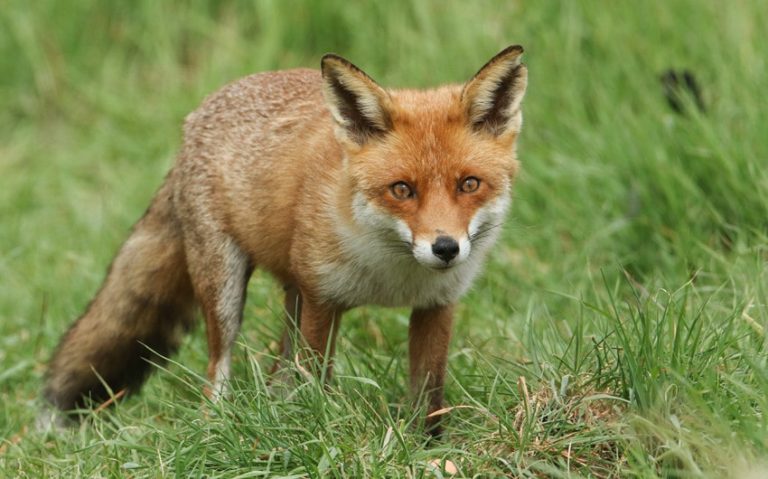What Animal Starts With V? Learn About 42 Creatures
Have you ever wondered what animal starts with V? From the vibrant colors of the Vanuatu Petrel to the elusive nature of the Vaquita, the animal kingdom is full of surprises starting with this uncommon letter.
In this article, we dive into the fascinating world of animals whose names begin with ‘V,’ uncovering some lesser-known facts about these unique species. Whether you’re a nature enthusiast or simply curious, join us on this intriguing exploration that brings the letter ‘V’ to life in the most unexpected ways.
Animals That Start With V
1. Vervet Monkey
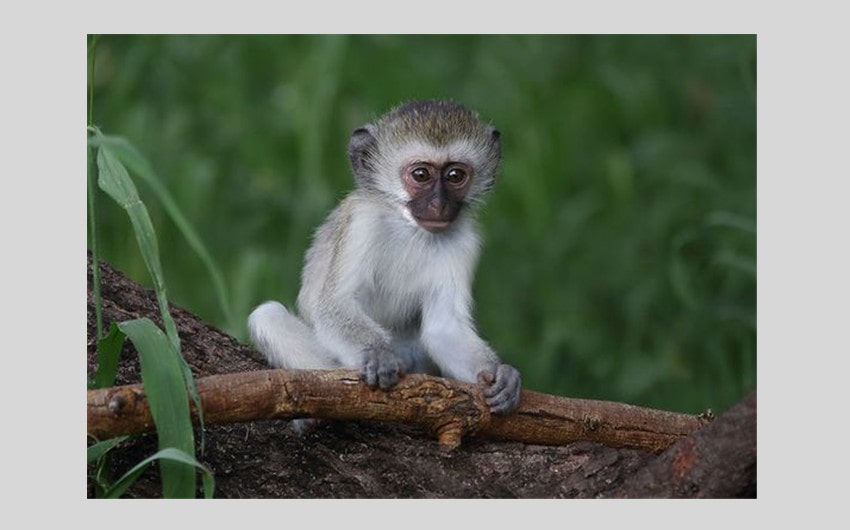
Image source: Pinterest
Native to Africa, the Vervet Monkey is known for its black face and grey body fur, with males displaying a turquoise blue scrotum. These primates live in highly social troops and are known for their complex communication system which includes various vocalizations and gestures.
2. Vampire Bat
The Vampire Bat is one of the few mammal species that survives entirely on blood. Found primarily in the Americas, these bats are nocturnal and have heat sensors on their noses to help locate blood flow in their prey. Their saliva contains an anticoagulant enzyme that prevents the blood from clotting while they feed.
3. Vulture
Vultures are scavenging birds of prey, playing a crucial ecological role by consuming carrion and thus preventing the spread of diseases. Different species are found worldwide and are distinguished by their bald heads, which are thought to be an adaptation for hygiene, helping to keep them clean while feeding.
4. Vaquita
The Vaquita is a critically endangered species of porpoise native to the Gulf of California, often referred to as the world’s rarest marine mammal. These elusive creatures are threatened by illegal fishing practices and are distinguished by their small size and distinctive dark rings around their eyes.
5. Vicuña
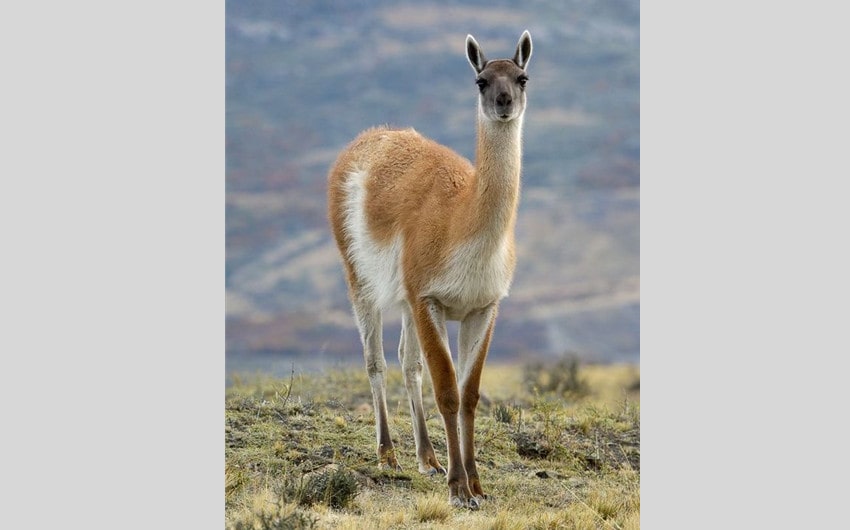
Image source: Pinterest
Vicuñas are wild South American camelids, closely related to llamas and alpacas, living in the high alpine areas of the Andes. They are highly valued for their fine wool which is among the most expensive in the world. Vicuñas are protected by law and shearing them requires specific regulations to ensure their protection.
6. Viper
Vipers are venomous snakes found all over the world, known for their distinctive “V”-shaped heads and long, hinged fangs which allow them to inject deep venom into their prey. The family includes species like the rattlesnake, pit viper, and bushmaster, all adapted to a wide range of environments.
7. Vinegaroon
Also known as whip scorpions, Vinegaroons are arachnids found in tropical and subtropical regions including the southern United States. They are non-venomous and are called vinegaroons because they can spray a vinegar-like acetic acid from their tails as a defense mechanism against predators.
8. Volcano Rabbit
The Volcano Rabbit is native to Mexico and is named for its habitat in regions with volcanic soils around Mexico City. It is one of the world’s smallest rabbit species and is critically endangered due to habitat loss and fragmentation.
9. Vole
Voles are small rodents resembling mice but with shorter tails, larger eyes, and a stouter body. They are primarily herbivorous and play significant ecological roles as prey for a variety of predators. Their populations are known for their boom and bust cycles that drastically affect local ecosystems.
10. Vanuatu Petrel
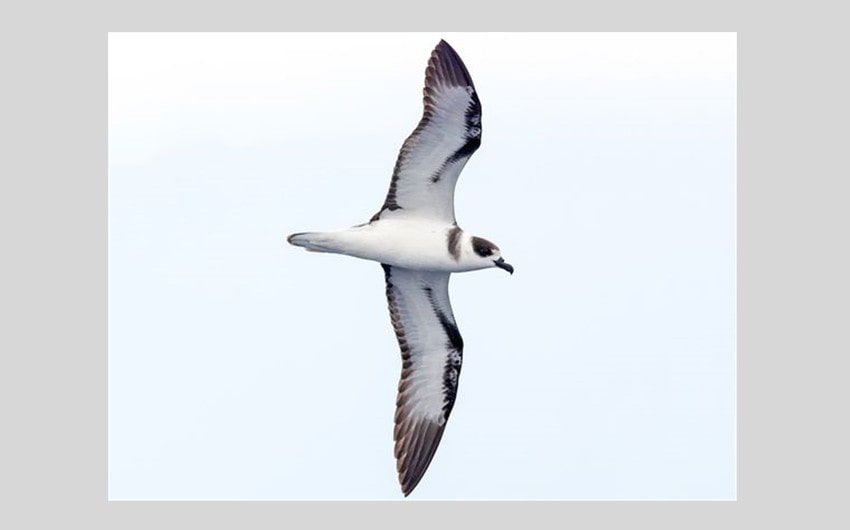
Image source: Pinterest
The Vanuatu Petrel is a rare seabird from the Vanuatu region, known for its elusive nature. Little is known about its population size due to its remote nesting sites and nocturnal habits. Efforts are ongoing to better understand and protect this mysterious bird.
11. Vanga
The Vanga is a unique bird found exclusively in Madagascar, known for its remarkable diversity within the family. These birds exhibit a variety of feeding habits and beak shapes, adapted to different ecological niches within the island’s forests. Their name encompasses a wide range of species, each with distinct behaviors and adaptations, making them a fascinating subject of study for ornithologists.
12. Velvet Worm
Velvet worms are ancient creatures with a lineage that dates back over 500 million years. They have a soft, velvety texture, and their bodies are covered with tiny papillae giving them their distinctive look. These worms use a unique hunting mechanism, spraying a sticky slime to capture prey such as small insects. Found in tropical forests, they play a critical role in the ecosystem as both predators and prey.
13. Velvet Asity
The Velvet Asity is a small bird native to Madagascar, characterized by its striking plumage and sexual dimorphism. Males are particularly vibrant during the breeding season, sporting bright colors and ornamental feathers to attract females. These birds are found in the rainforests of Madagascar, where they feed primarily on nectar and occasionally insects.
14. Violet Turaco
The Violet Turaco, also known as the violaceous plantain eater, is a West African bird known for its striking violet-colored feathers and bright orange bill. This species is often seen in small flocks in forests and savannas, where they feed on fruits, leaves, and seeds. The turaco’s vivid plumage makes it a favorite among bird watchers and a beautiful example of avian biodiversity.
15. Violet-backed Starling
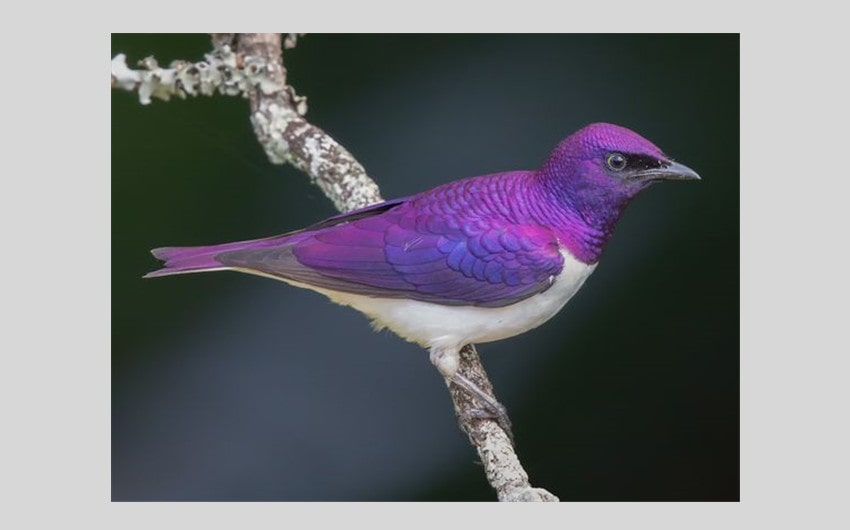
Image source: Pinterest
The Violet-backed Starling is an African bird that exhibits strong sexual dimorphism. Males have a brilliant iridescent violet back contrasting with their white underparts, making them one of the more visually stunning starlings. These birds are migratory, moving between different regions in Africa based on the season and available food sources, primarily feeding on insects and fruits.
16. Viperfish
The Viperfish is one of the most unusual-looking creatures of the deep sea, known for its large mouth and fang-like teeth, which it uses to impale its prey. Living in the deep ocean’s twilight zone, it uses bioluminescence to attract prey, emitting light from its body to lure in smaller fish. Viperfish are considered one of the fiercest predators in the deep sea.
17. Visayan Warty Pig
The Visayan Warty Pig is native to the Visayan Islands in the Philippines and is critically endangered due to habitat loss and hunting. Recognizable by their distinctive warts and tufts of hair, these pigs are a key species for conservation efforts due to their ecological role in maintaining forest habitats through foraging.
18. Virginia Opossum
The Virginia Opossum is the only marsupial found in North America north of Mexico. Known for “playing possum,” these animals feign death when threatened to escape predators. They have a versatile diet, eating everything from fruit to roadkill, contributing to their success in diverse environments from urban areas to woodlands.
19. Vidua Finch
Vidua Finches, also known as indigobirds or whydahs, are interesting for their brood parasitism behavior, similar to that of cuckoos. They lay their eggs in the nests of other finch species, relying on the unwitting host to raise their young. Each Vidua species mimics the song and egg appearance of its host species, an adaptation that ensures the survival of its chicks.
20. Vietnamese Mossy Frog

Image source: Pinterest
The Vietnamese Mossy Frog is notable for its extraordinary camouflage. With a skin that resembles moss-covered stone, this frog blends seamlessly into its habitat, evading predators. Found in Vietnam’s forests, it relies on this camouflage as its primary defense mechanism, staying motionless when threatened to appear just like part of the mossy landscape.
21. Violet Snail
The Violet Snail, a marine gastropod, is noted for its beautiful, translucent purple shell. Unique among sea creatures, it creates a raft of bubbles which allows it to float on the water’s surface. This adaptation is particularly useful for feeding on cnidarians such as the Portuguese man o’war. Their life on the surface exposes them to different risks and predation compared to their benthic relatives.
22. Violet Carpenter Bee
The Violet Carpenter Bee is one of the largest bee species and is found across Europe and Asia. Despite their intimidating size and loud buzzing, they are relatively harmless and rarely sting. These bees are named for their shiny, black bodies with violet reflections, and their ability to bore into wood to build their nests, which can cause damage to wooden structures.
23. Viper Moray Eel
The Viper Moray Eel, known for its fearsome appearance and sharp teeth, is found in the warm waters of the Indo-Pacific. These eels have a distinctive pattern that helps them blend into the rocky sea floor where they await their prey. Their diet mainly consists of small fish and cephalopods, captured using their rapid strike ability.
24. Venus Flytrap Sea Anemone
The Venus Flytrap Sea Anemone resembles its terrestrial namesake, the Venus flytrap plant, in its method of feeding. Located primarily in deep ocean environments, this anemone uses its reactive tentacles to capture passing prey, snapping shut much like the flytrap does with insects. This method of ambush predation is highly effective in nutrient-poor deep-sea areas.
25. Verreaux’s Sifaka
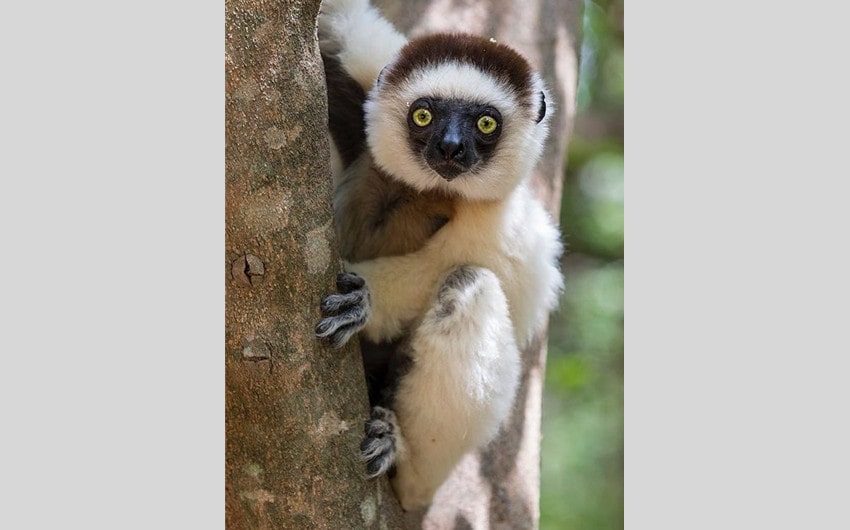
Image source: Pinterest
Verreaux’s Sifaka is a striking species of lemur found only on the island of Madagascar. Characterized by their long, white fur with patches of black on the face, chest, and limbs, these lemurs are part of the ‘dancing’ lemurs due to their unique bipedal movement. Verreaux’s Sifaka lives primarily in dry forest areas and relies heavily on tree-based resources for both food and shelter. Their diet mainly consists of leaves, fruit, and bark, crucial for their survival in the seasonal climates of Madagascar.
26. Vanga Flycatcher
The Vanga Flycatcher, part of the diverse Vanga family exclusive to Madagascar, showcases a wide range of feeding techniques and bill shapes adapted to their ecological niches. The flycatcher species, in particular, is adept at catching insects in flight using its agile flying skills and sharply curved bill.
27. Volcanic Lava Crab
Found exclusively on the Galapagos Islands, the Volcanic Lava Crab is a specialist species that thrives on the rocky lava coasts. These crabs are adapted to their harsh, heated environment with a dark coloration that blends into the volcanic rocks, providing camouflage from predators.
28. Vanellus Chilensis (Southern Lapwing)
The Southern Lapwing, scientifically known as Vanellus Chilensis, is a common sight in South America’s grasslands and wetlands. Known for its bold behavior, it often confronts intruders with loud calls and aggressive displays. Its striking appearance includes a black crown, white underparts, and a unique spur on its wings which it uses in defense.
29. Verdin
The Verdin is a tiny songbird of the American southwest, easily recognized by its bright yellow head and compact body. Despite their small size, Verdins are hardy, adapting well to the arid desert environments where they build intricate nests to shield themselves from the extreme temperatures.
30. Venezuelan Troupial

Image source: Pinterest
The Venezuelan Troupial is renowned for its vivid orange body, black head, and blue eyes. It is Venezuela’s national bird and is popular in aviculture due to its striking plumage and melodious song. Troupials are opportunistic feeders, eating everything from insects to fruit and small vertebrates, showcasing a versatile adaptation to different habitats and food sources.
31. Variable Hawk
The Variable Hawk is a raptor found throughout South America, known for its remarkable variability in size and coloration across different regions, which likely led to its name. These birds of prey are highly adaptable and can inhabit diverse environments, ranging from the high Andes to coastal regions. They feed on a variety of prey, including rodents, birds, and insects, showcasing their versatility as hunters.
32. Vulturine Guineafowl
The Vulturine Guineafowl, native to East Africa, stands out with its striking appearance. It has a bare blue face, a black body with white stripes, and a long, vulturine neck that lacks feathers, resembling a vulture, hence its name. This bird is the largest and most colorful among the guineafowl species and prefers to live in flocks in dry savannas and bushlands, where it feeds primarily on seeds and insects.
33. Vervain Hummingbird
The Vervain Hummingbird, one of the smallest hummingbird species, is found in the Caribbean. Despite its tiny size, this bird displays vibrant green plumage and a remarkable energy level, buzzing from flower to flower to sip nectar. Its rapid wing beats allow it to hover in mid-air, a characteristic feature of hummingbirds.
34. Violet-crowned Hummingbird
The Violet-crowned Hummingbird is admired for its beautiful, violet-colored cap contrasting with its primarily white underparts and green back. Found in open woodlands and scrub of the southwestern United States down to Central Mexico, this hummingbird prefers areas with abundant flowers and feeds on nectar and insects.
35. Violet-tailed Sylph

Image source: Pinterest
This stunning hummingbird, native to the Andean cloud forests of Colombia and Ecuador, features a long, iridescent violet tail and a shimmering green body. The Violet-tailed Sylph primarily feeds on nectar from a variety of flowers and is a sight to behold as it flits through the high-altitude forest, making it a favorite among birdwatchers.
36. Vulture Grouper
The Vulture Grouper is a large, predatory fish found in tropical and subtropical waters. Known for its robust body and capability to grow several feet in length, this grouper is a formidable hunter, feeding on a variety of fish and invertebrates. Its name derives from its bald appearance and scavenging behavior, reminiscent of terrestrial vultures.
37. Valley Garter Snake
The Valley Garter Snake is a colorful, non-venomous snake species native to North America, particularly found in grasslands and near water bodies like rivers and lakes. Recognizable by its long, striped pattern running along its body, the snake feeds primarily on amphibians and earthworms. It is known for its quick reflexes and ability to adapt to varying environmental conditions.
38. Virgin Islands Dwarf Gecko
The Virgin Islands Dwarf Gecko is one of the smallest terrestrial vertebrates in the world. Found primarily in the Virgin Islands, this minuscule lizard is often bright green or orange, with males typically exhibiting more vibrant colors.
39. Viper’s Bugloss
Viper’s Bugloss, scientifically known as Echium vulgare, is a striking plant known for its vivid blue flowers that bloom along spiky, viper-shaped inflorescences. Native to most of Europe and western and central Asia, this wildflower thrives in dry, sandy soils and is often found in meadows and roadsides.
40. Virginia Deer

Image source: Pinterest
Also known as the white-tailed deer, the Virginia Deer is a widely recognized species across North America. Known for its characteristic white underside to its tail, which it displays as a warning to other deer when threatened, this deer adapts well to a wide range of habitats from forests to open fields and has a diet primarily consisting of grass, nuts, and leaves.
41. Vogelkop Bowerbird
Named after the Vogelkop Peninsula in New Guinea where it is found, the Vogelkop Bowerbird is famous for its incredible courtship behavior, where males build elaborate structures, or bowers, decorated with sticks and brightly colored objects to attract mates. The male’s ability to arrange these items artistically is a unique behavior among birds.
42. Volga Pikeperch
Also known as the Zander, the Volga Pikeperch is a species of fish native to Europe and western Asia. This predator is highly valued as a sport fish and is known for its light, flaky meat. It inhabits freshwater bodies and preys on smaller fish, using its keen eyesight to hunt in murky waters.


